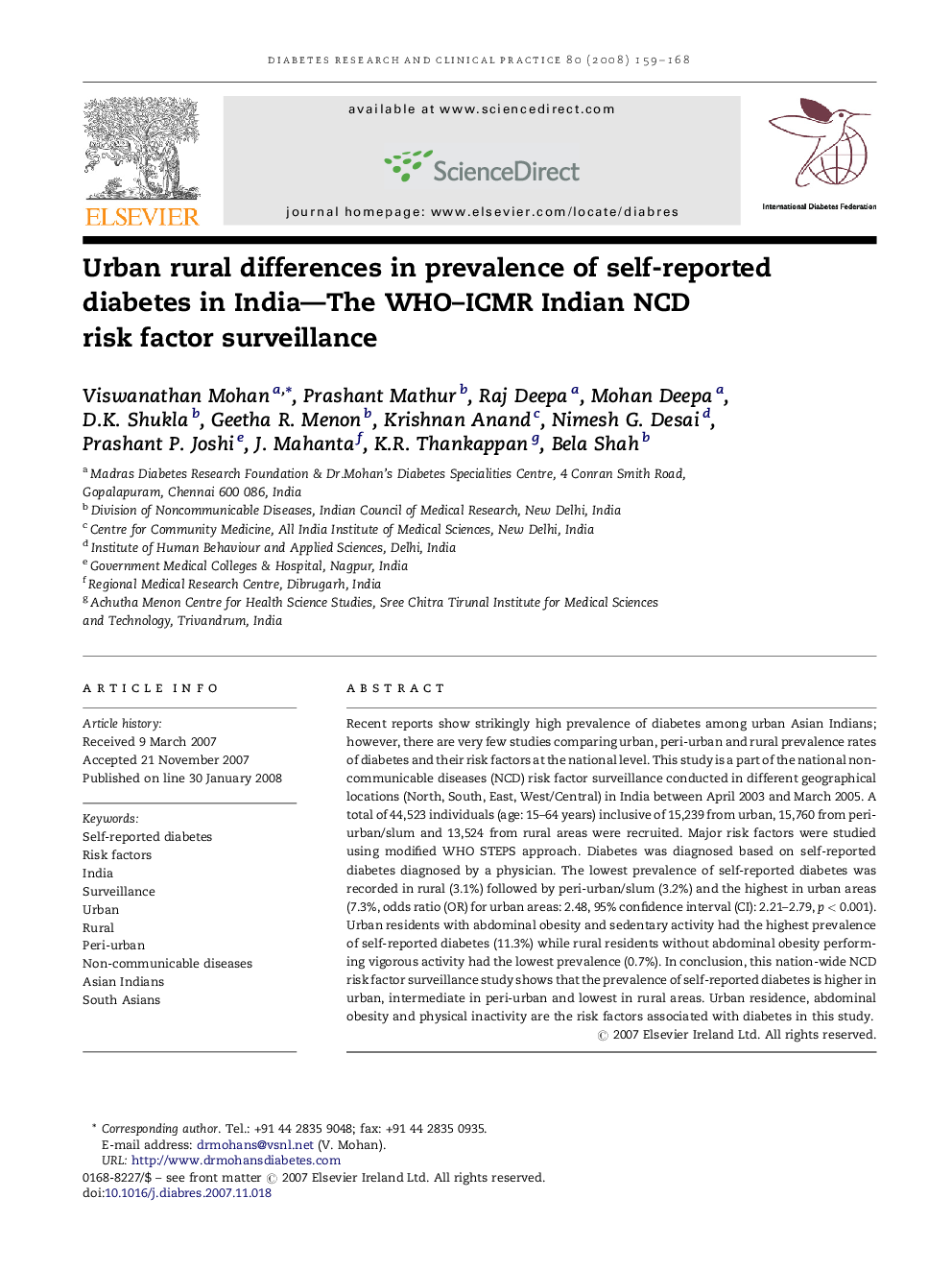| Article ID | Journal | Published Year | Pages | File Type |
|---|---|---|---|---|
| 2798326 | Diabetes Research and Clinical Practice | 2008 | 10 Pages |
Recent reports show strikingly high prevalence of diabetes among urban Asian Indians; however, there are very few studies comparing urban, peri-urban and rural prevalence rates of diabetes and their risk factors at the national level. This study is a part of the national non-communicable diseases (NCD) risk factor surveillance conducted in different geographical locations (North, South, East, West/Central) in India between April 2003 and March 2005. A total of 44,523 individuals (age: 15–64 years) inclusive of 15,239 from urban, 15,760 from peri-urban/slum and 13,524 from rural areas were recruited. Major risk factors were studied using modified WHO STEPS approach. Diabetes was diagnosed based on self-reported diabetes diagnosed by a physician. The lowest prevalence of self-reported diabetes was recorded in rural (3.1%) followed by peri-urban/slum (3.2%) and the highest in urban areas (7.3%, odds ratio (OR) for urban areas: 2.48, 95% confidence interval (CI): 2.21–2.79, p < 0.001). Urban residents with abdominal obesity and sedentary activity had the highest prevalence of self-reported diabetes (11.3%) while rural residents without abdominal obesity performing vigorous activity had the lowest prevalence (0.7%). In conclusion, this nation-wide NCD risk factor surveillance study shows that the prevalence of self-reported diabetes is higher in urban, intermediate in peri-urban and lowest in rural areas. Urban residence, abdominal obesity and physical inactivity are the risk factors associated with diabetes in this study.
